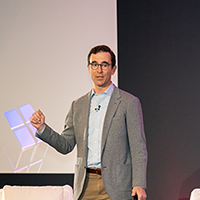 Personalized marketing sounds a dream come true—if you can send each customer exactly the right message at exactly the right time that gets them to buy more, you will by definition maximize revenue.
Personalized marketing sounds a dream come true—if you can send each customer exactly the right message at exactly the right time that gets them to buy more, you will by definition maximize revenue.
The trick, of course, is figuring out what message to send and when. For that, you need some sort of advanced analytics to predict customer-buying interests and inclinations. The problem is that’s impossible. Each individual customer and their context is too complex to predict interests or behavior with any real certainty. So what can be done? We can start by understanding these four key facts:
- No technology or person can predict the future.
Be careful of marketing platforms that imply they can predict a customer’s purchasing intent or interest based on their latest or most recent behaviors. What the system might think it infers could well be annoying to the customer. “I looked at what my friend paid for his new golf clubs on Amazon, and now I can’t get away from ads and emails about golf clubs!”
When it comes to making predictions, all anyone can do is assess the probabilities of various outcomes. That may sound simple or obvious, but I’ve talked to a lot of marketers who don’t understand what that means. They think a mathematically derived probability of a customer to buy a certain product is a prediction of whether or not they will buy. If a customer has a high probability and they buy, the prediction was good. If they have a high probability and do not buy, the prediction was bad.
- Confusion about probability leads to all kinds of errors in marketing judgment.
For example, if a customer has a low probability to buy a certain product, some marketers automatically conclude that it’s not worth promoting or recommending that product to the customer. They also might look at a high probability for an individual customer to buy a certain product and, based on their personal knowledge of that particular customer, know that the predicted probability cannot be correct. They conclude that the scoring algorithms used to calculate probabilities will not be useful for marketing.
- The secret to making predictive analytics work for marketing is using it at scale.
In other words, forget about getting the message or offer right for each individual customer. You will not. The goal is only to improve your batting average—just get more customers to buy. And concentrate most of your limited analytics budget on buying behavior, not preferences, sentiment, or behaviors less directly associated with revenue.
Probabilities, calculated properly, work very well across populations of customers, not for individual customers. If you can find a segment or group of customers who have a 1-2% probability of buying a certain product, that’s a very low probability that any individual customer will buy. But you will get 1-2% of that group to buy.
If your typical product promotion gets about 0.5% buyer response, you could get significant revenue uplift from promoting products with 1-2% probabilities to this group. To get the best revenue lift, you need to personalize the product offers to each customer.
Not everyone wants best sellers. Try to recommend to each customer the products with the highest purchase probabilities for that individual.
- The key is to offer each customer the products with the highest probability of being purchased, even if the actual probability for any given customer-product combination is low.
If you do that with a lot of customers, you’ll see increased buying across the population, even if many customers do not behave as predicted. Leverage the purchasing patterns that exist in every customer base to get more accurate predictions (probabilities), and then use that knowledge to improve the chances of getting each customer to buy, even by a small amount.
If you increase the chance from 1% to just 2%, you will eventually double your returns eventually, because anything can happen with one throw of the dice. But if you throw a die enough times, eventually a six will have come up almost exactly 1/6 of the time. Probabilities work every time when consistently applied at scale.
New services and technologies are making it easy and affordable to “predict” the loyalty, likelihood to buy, and the probability of buying each available product for every customer.
Reaching as many customers as possible with better offers amplifies the impact of getting it right more often.
The majority of customers may still be unaffected, but a little more revenue per message adds up to real money fast at scale. Platforms that make recommendations based on current customer interaction reach just one customer at a time (while they are “interacting”) and may not generate enough volume to make the probabilities drive enough lift to justify the cost.
If an email campaign promoting three personalized product offers to each of a million customers at once could increase revenue from $1.00 to $1.20 per email, that’s an incremental $200,000 from that one campaign. If the cost of the analytics to do this was just a few thousand dollars, would that be a successful campaign? That’s exactly the sort of success that is possible when you make personalized marketing analytical, not personal.
Peter Moloney is CEO of Loyalty Builders.
 Network
Network

